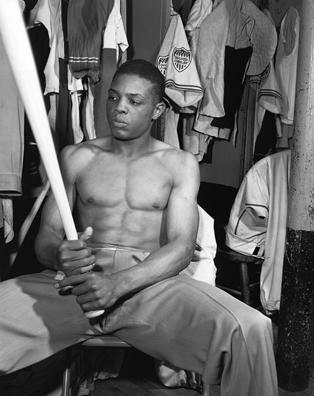William Howard “Willie” Mays Jr. etched his name in the minds and hearts of baseball fans when he made “The Catch” during the 1954 World Series, where his Giants team swept the Cleveland Indians 4-0.
Mays made one of the most famous defensive plays in baseball history, “tracking down a long fly ball off the bat of Vic Wertz, then whirling around and throwing the ball back to the infield to prevent the runners from scoring after the fact.”
He was a two-time NL MVP and one of just six players in baseball history to hit at least 600 home runs during his career. According to Hall of Famer Leo Durocher, Mays could do the five things you have to do to be a superstar: hit, hit with power, run, throw, and field adding, “he had that other magic ingredient that turns a superstar into a super superstar. He lit up the room. He was a joy to be around.”
Mays Jr. was born May 6, 1931, in Westfield, Ala., just outside of Birmingham. His father and grandfather both had been baseball players. His father being a talented player for the Negro team with the local iron plant. By the age of 5, Mays was playing catch with his father, and by 10, he was sitting on the bench during his father’s games.
By age 16, Mays was already playing and excelling. A gifted man, he also played basketball and football in school. In 1948, at 17, he joined the Birmingham Black Barons, which made it all the way to the Negro Leagues World Series.
Playing only on Sundays during the school year because he was still in high school at the time, Mays nonetheless was good enough to attract the attention of several major league scouts, including one from the New York Giants. The team purchased his contract once he graduated in 1950, assigning Mays to its Trenton affiliate.
Life in the big league started slowly with Mays going hitless in his first 12 at-bats. In his 13th at-bat however, he hit a home run off future Hall-of-Famer Warren Spahn and despite coming up with only a .274 batting average, 20 home runs and 68 RBI in 121 games, Mays won the 1951 Rookie of the Year Award.
Having tasted glory, there was no turning back. However, service to country was needed so off he went to serve in the military. After a two-year hiatus in the U.S. Army, Mays returned to baseball in 1954. He led the league in hitting with a .345 average and blasted 41 home runs, taking home the MVP Trophy in the process. He is considered by many as the best all-around player in the history of baseball.
After the 1957 season, Mays found himself in San Francisco. The trip west did nothing to slow him down. During the first season in California, Mays had a career-best .347 batting average and missed his third straight 30-30 season by just one home run.
“At both the plate and in the field, Mays continued to do things that baseball had never seen before, creating the 30-30 club in 1956 when he stole 40 bases to go along with hitting 36 home runs. In 1957, Mays won the first-ever Gold Glove for center field, the first of 12 consecutive times he would be so honored. Mays also became just the second player in baseball history to have 20 doubles, triples, home runs and steals in the same season in 1957.”
The 1965 season marked Mays’ second MVP campaign. He belted a career-high 52 home runs, including the 500th of his illustrious career, on Sept. 13, 1965, against Don Nottebart of the Houston Astros. After the season, Mays signed a two-year contract that made him the highest paid player in all of baseball.
Mays Jr. played in 24 All-Star games, compiling 660 career home runs (third all-time when he retired). He was known first for his spectacular leaping and diving catches before he established himself as a hitter.
Mays also known as the “Say Hey Kid” was the number one ranked center fielder in baseball history by Bill James in The New Bill James Historical Baseball Abstract and was ranked the second greatest player in Major League history by The Sporting News in their list of the 100 Greatest Baseball Players.

Mays played 21 seasons with the Giants, and finished up with the Mets in 1972 and 1973. After retiring, he remained in the New York Mets organization, helping out as the team’s hitting instructor until the end of the 1979 season. He became a fulltime special assistant to the Giants, a position he held for close to 25 years.
In January 1979, Mays was elected to the Hall of Fame in Cooperstown in his first year of eligibility. The current stadium of the San Francisco Giants is located at 24 Willie Mays Plaza, and every May 24 in the city of San Francisco is celebrated as Willie Mays Day.
In 2015, he was honored with the Presidential Medal of Freedom by Barack Obama.









